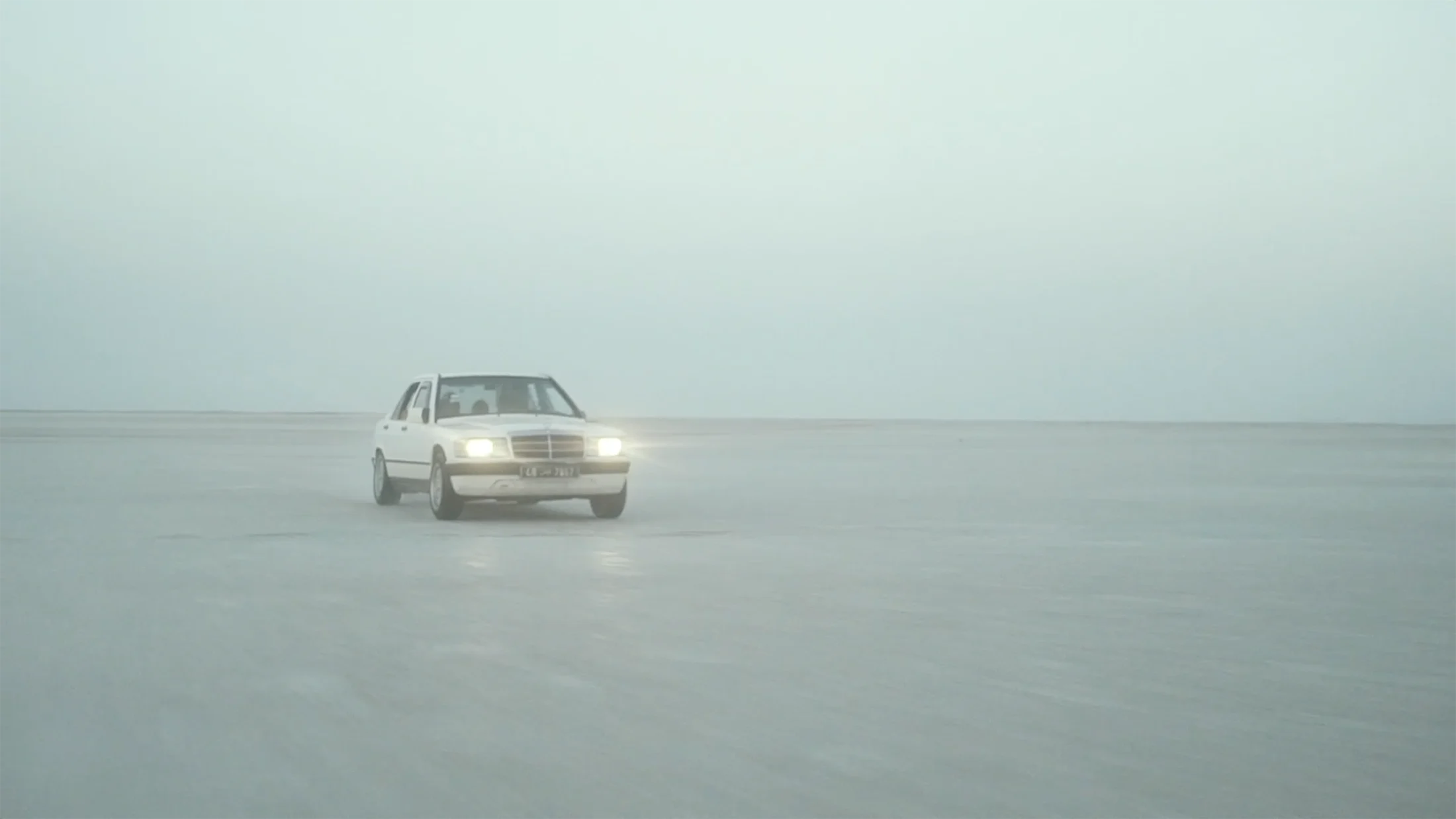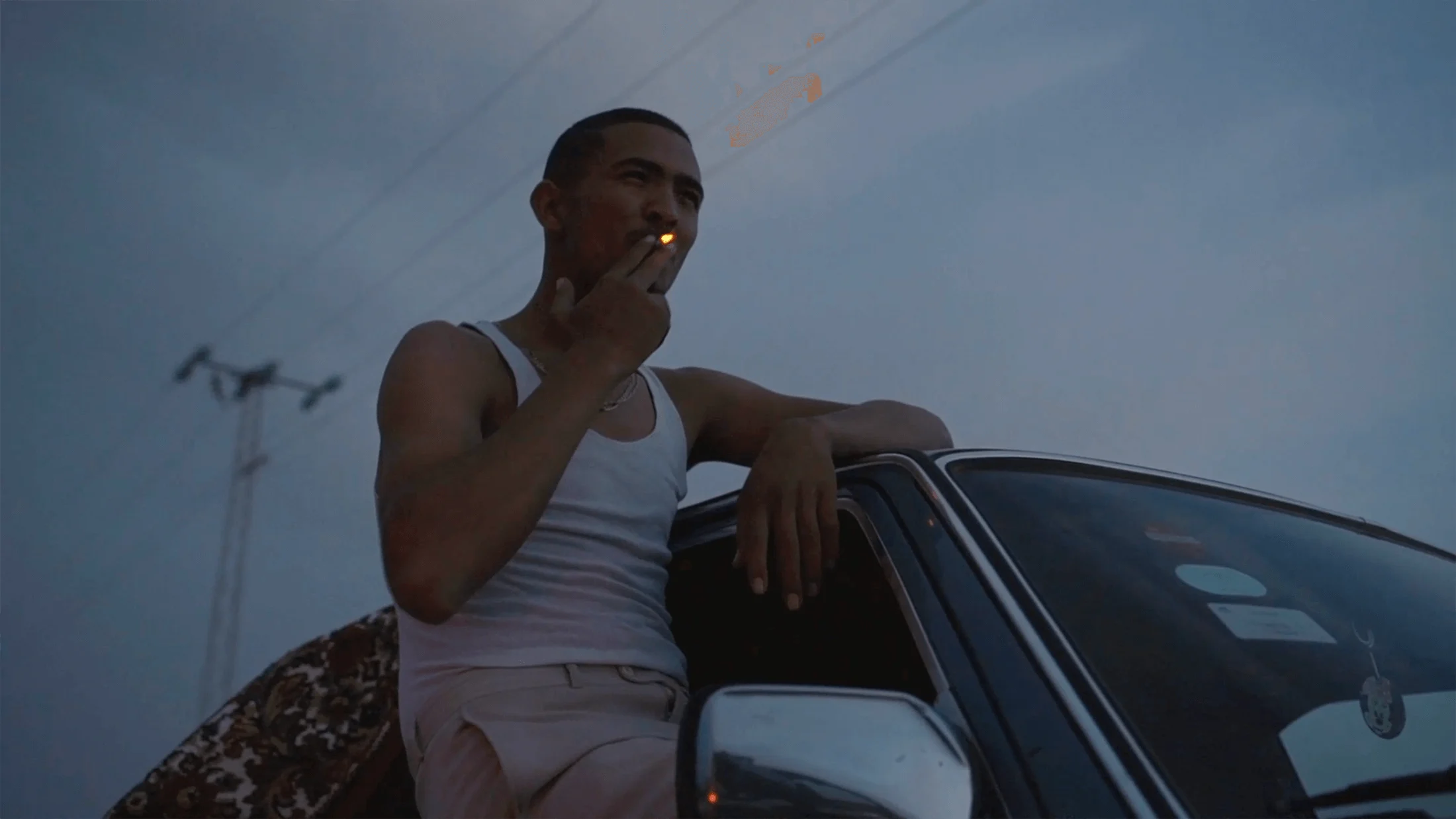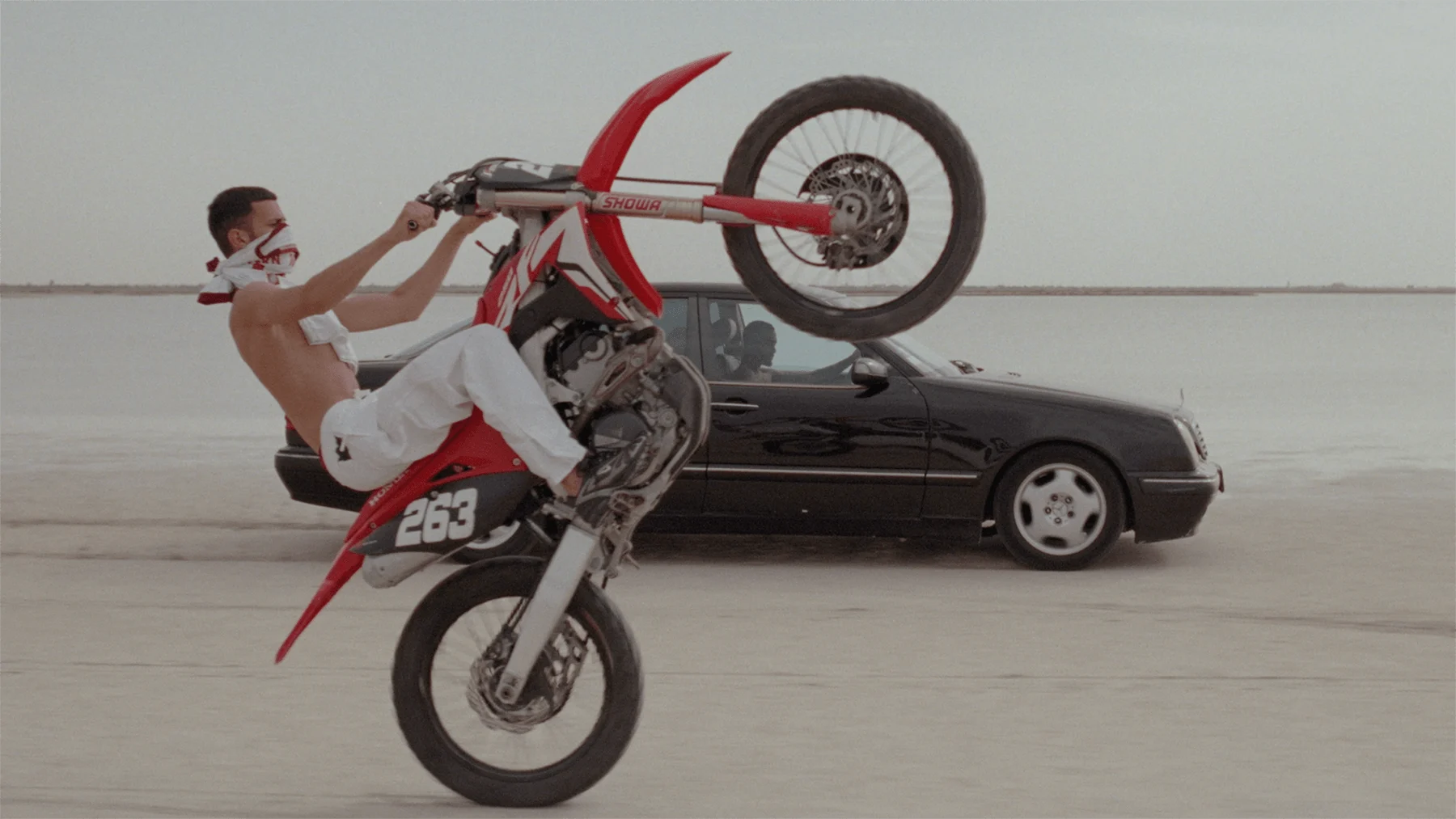
French-born, Tunisian artist Bilal El Kadhi’s short films are an ode to the beauty of Tunisia and the hopeful joy of those who grow up there, from the stunning backdrops of salt flats and ocean waves to the playful laughter of the children and teenagers who inhabit them. A closer look, though, shows the films to also be a comment on the hardships faced by its people, especially experienced by those who see no choice but to attempt to flee its shores. Here, writer Sarah Souli reflects on El Kadhi’s ability to tread this precariously intricate line between love and pain through his work.
If you know where to look, French-born, Tunisian photographer and artist Bilal El Kadhi’s two short films, “Yonder,” completed in 2022, and “Life of Isaaq,” which he made in 2019, are full of winks. Both works were filmed on the Tunisian island of Djerba, and little nods to the isle are found throughout, from the use of Hebrew writing in “Life of Isaaq” (the island has historically always had a significant Jewish population) to the bright blue waistband of “MEN” underwear, popular enough that you’ll encounter at least a few guys wearing them if you wander along the beach for long enough.
Both films are, at first glance, an ode to the understated elegance of Tunisia. Djerba, despite its international package tourism appeal, and a growing contemporary art scene, remains a largely traditional and conservative island with a deep history, as shaped by financial hardship as it is by aesthetics.
Yet it is in the subtle details of everyday life—the shape of a crossed leg in a cafe, loud laughter at a wedding—where the true essence of Djerba is found.


There was a strange nostalgic feeling, too. Like I was watching an old childhood tape.
Much commentary on El Kadhi’s work focuses singularly on the gorgeous, dreamy quality of the images. Youth is beauty, and so is Tunisia: a sun-drenched Mediterranean country where the white light is reflected back into the sparkling eyes and sharp cheekbones of kids running across salt flats or into the sea, dancing together on rooftops, and laughing with wild abandon on motorcycles.
“There’s something I’m feeling in Tunis that I wasn’t familiar with before living here—how openly affectionate people are to each other,” says Tunisian-Finnish artist Dora Dalila Cheffi. It’s this compassionate portrayal of Tunisian kids that’s instantly captivating in El Kadhi’s work—the ability to give space for unbridled joy and pleasure, for its own sake. “There was a strange nostalgic feeling, too,” Racem, a 25-year-old graphic designer in Tunis, told me after watching both works. “Like I was watching an old childhood tape.”
The music, which soars over the images and pierces through the screen into the viewer’s emotional world, only heightens this feeling of softness. All the scores are created by El Kadhi’s close friend Brit Myers; poetic and melodic, the music is purposefully free of Tunisian or Arabic instruments or rhythms—a conscious choice to avoid cliche. Instead, the music allows us to focus on the universal commonalities of youth and the extreme depth of feelings that come with tender age. “These videos are the perfect representation of Tunisian youth today,” says Farah, a 22-year-old sociology student in Tunis, “which tends towards liberty and never misses an occasion to live life to its fullest.”
But to be a young person in Tunisia is not to live an existence of permanent freedom. It is, most often, quite the opposite: a legacy of colonialism and crony politics has created a tattered, disparate economy and extreme unemployment, especially among young men. Europe beckons, with its gilded promise of money and jobs, and yet oppressive and racist border control by the European Union systematically, and violently, crushes youthful dreams and spirits.
At the start of “Life of Isaaq,” a young man is splayed out topless on his bed, solemnly smoking a cigarette and shuffling through a pile of money. A tulle curtain, woven with shimmering thread, flutters slightly in the breeze. Presumably this is Isaaq, and we follow him (or versions of him) through a more gentle portrayal of Tunisian masculinity. In the last scene before the credits, Isaaq, leaning out of the car window driving at dusk, throws a cigarette butt on the ground and flashes a quick smile.
Isaaq is played by Nizar, a childhood friend of El Kadhi’s. They grew up together, both extremely talented and eager to bite off all that life had to offer, only the dumb luck of geography and birth certificates dividing them. “Life of Isaaq” does not touch on the inequality of Tunisians who are refused a European visa—but Nizar’s real life experience around the depressing reality of immigrant bureaucracy is painfully obvious by his absence in “Yonder.”
Tunisian youth today tends towards liberty and never misses an occasion to live life to its fullest.
Like many of his contemporaries, Nizar tried to emigrate clandestinely, across the sea under a blanket of night. Each of the three times Nizar took the boat, it sank, and he almost drowned. The fourth time should have been lucky—the boat safely made it to Italy. But on the motorcycle ride to the shore, Nizar had a road accident and fell into a coma, succumbing to his injuries a few months later. Cruelly ironic injustice—that is another indelible facet of Tunisian youth.
When I hear this story for the first time, a familiar bubble of guilt rises in my chest. I too have the luxury of a European passport thanks to the luck of my immigrant parents; my Tunisian cousins—some of whom have tried to cross the Mediterranean, with varying degrees of success—do not. Like the scenes in El Kadhi’s work, we have all danced to music in cars and kicked a football in the street and shared a seductive smile with a lover. And yet our realities are obviously—to a painful degree—not shared.


“Yonder” explores these themes more explicitly. In one brief scene, a young man pours gasoline over himself and holds up a lighter. The character is played by Nizar’s brother, and the scene instantly reminded me of Mohamed Bouazizi, the Tunisian vegetable seller whose self-immolation in 2010 is often regarded as the catalyst for the 2011 Tunisian Revolution and the subsequent Arab Spring. That Tunisia, which, following a gasp of democracy, has regressed back to a quasi dictatorship with an economy hardly better than it was a decade ago, lends even more urgency to this question of free movement.
In the last scene of “Yonder,” a young Black boy stands in the sea watching a boat burn, the smoke engulfing the dusky sky. Tunisia has both a historically Black population, and a recent influx of migrants from Central and West African countries trying desperately, like Nizar, to cross into Europe. Given no respect and even fewer legal rights, thousands of Black migrants are stuck in bureaucratic limbo in Tunisia, many in underfunded refugee camps near Djerba. I watch this final scene over and over again, the music fading as the camera pans to the boy’s profile, illuminated by flames. Youthful joy is universal, but so too is state-sponsored persecution. Love and oppression in an endless circle.

